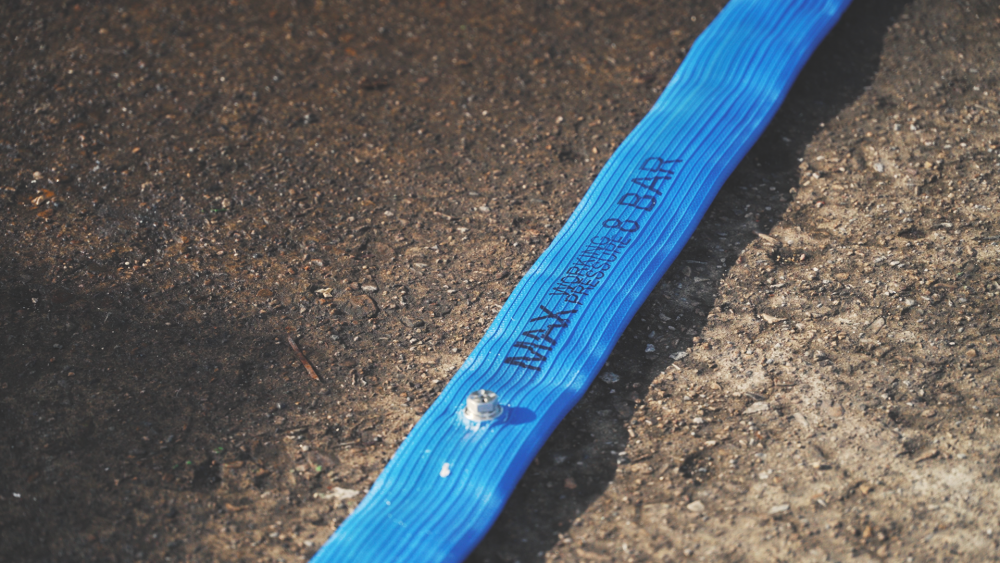What Is Portable Foam Equipment?
Portable foam equipment refers to mobile systems designed to apply firefighting foam onto flammable liquid fires (Class B) and in some cases, solid combustibles (Class A). These systems are deployed quickly by on-site emergency crews, allowing for immediate response before larger suppression units arrive.
Delta Fire’s range includes:
- Foam branchpipes and inductors
- Foam making equipment
- Portable foam units (PFUs)
- Wheeled foam trolleys
- Mobile foam proportioners/inductors and delivery devices
All equipment is designed to deliver a range of different foams, compatible with Delta Fire’s fluorine-free foam concentrates, supporting compliance with 2025 PFAS regulations.
Key Use Cases in Industrial Settings
Flammable Liquid Storage Areas
Fuel depots, refineries, and chemical plants require fast application of foam to suppress vapours and prevent ignition.
- Equipment must allow safe distance application
- Induction systems must match the percentage concentration of the foam used (typically 1%, 3% or 6%)
- Large-area coverage via high-capacity nozzles or trailer-mounted monitors
Offshore Platforms & Marine Terminals
Space constraints and complex layouts mean foam units must be compact and high-performing.
- Wheeled foam trolleys with twin 140 litre capacity are most common
- Equipment must be resistant to saltwater and corrosion
- Foam output must remain stable under wind-exposed conditions
Bulk Fuel Tank Protection
Portable foam equipment can support fixed systems or serve as backup in manual suppression operations.
- Often used during maintenance or fixed system failure
- Requires long-range discharge nozzles and high-flow branchpipes
- Must be able to apply a consistent foam blanket to suppress reignition
Hazardous Material Processing Facilities
Fires involving solvents or aggressive chemical reactions must be rapidly isolated.
- Use of alcohol-resistant foam agents
- Portable foam units configured with compatible foam types and accurate proportioners
- Flexibility to move equipment through confined spaces
Foam Equipment Sizing: What to Consider
1. Foam Concentrate Type
Select equipment compatible with the foam in use. Delta Fire’s systems are calibrated for use with fluorine-free foams to meet environmental regulations without compromising performance.
- Standard AFFF: Legacy systems, being phased out
- Fluorine-Free Foam (F3): The compliant choice under UK and EU regulations
- AR-F3: Required for polar solvents or alcohol-based fires
2. Proportioner Compatibility
Foam inductors must match both the percentage and flow rate requirements. Standard settings include:
- 1%, 3% or 6% in-line inductors
- Flow rates of 200 LPM to 900 LPM are typical
- Induction accuracy is critical to ensure foam effectiveness and conservation
3. Coverage Area and Application Rate
Determine the hazard size and minimum foam application rate, measured in litres per square metre per minute (L/m²/min). Guidance from NFPA 11 and EN standards suggests:
- Minimum application rate: ~4.0 L/m²/min for hydrocarbon fires
- Higher rate: ~6.5 L/m²/min for polar solvents
Example: A 100 m² fuel spill area would require a minimum of 400 L/min of foam solution for effective coverage.
4. Tank or Drum Capacity
Portable units are often supplied with 25L, 200L, or 1000L foam concentrate containers:
- 25L back-mounted units: Lightweight for mobile use, suitable for smaller incidents
- 200L units: A good balance for medium-sized industrial sites
- 1000L units: Designed for continuous discharge in large fire zones
All units should allow rapid drum replacement or be integrated with foam pick-up tubes for longer-duration incidents.
5. Distance to Hazard
For safety and usability:
- Hose length and nozzle throw distance must allow remote operation
- Wheeled trolleys should be easily manoeuvrable through plant infrastructure
- Monitor and branchpipe selection must support long-range throw (up to 25m or more)
Foam Nozzles, Branchpipes, and Accessories
Delta Fire’s foam nozzles and branchpipes are precision-engineered to provide stable foam patterns and optimal expansion ratios.
Typical features include:
- Dual-mode operation (jet/spray)
- In-line foam induction at source
- Lightweight aluminium alloy or corrosion resistant gunmetal construction
- Flow rates between 200–900 LPM
Complementary accessories such as inductor pick-up tubes, in-line foam inductors, and tank connectors are available to support full-system deployment.
Deploying Portable Foam Equipment Effectively
Pre-Configured Response Kits
Delta Fire recommends pre-configured foam response kits for industrial clients, including:
- Branchpipe
- Inductor matched to foam type and flow
- Suction hose and pick-up tube
- Foam barrel(s)
- Storage cradle or trolley
This reduces deployment time and supports consistency across emergency teams.
Operator Training
Industrial sites must invest in training for foam equipment use — covering:
- Inductor set-up and calibration
- Nozzle pattern adjustment
- Foam type awareness (especially fluorine-free compatibility)
- Site-specific deployment plans
Delta Fire offers product-specific training packages as part of its support services.
Maintenance and Inspection
Regular inspection ensures readiness. Focus areas:
- Visual checks for hose wear, corrosion or blockages
- Verifying inductor calibration
- Confirming foam concentrate levels and expiry
- Cleaning nozzles and branchpipes after each use (post use flushing with fresh water)
A maintenance log is recommended, particularly for safety-regulated sites where insurance or HSE audits are frequent.
Compliance and Sustainability Considerations
By July 2025, most PFAS-based firefighting foams will be prohibited across the UK. All portable foam equipment must be compatible with fluorine-free foam agents.
Delta Fire’s equipment range is fully compatible with F3 and AR-F3 foams and can be integrated into existing response strategies without modification to core infrastructure.
Our commitment to ISO 14001 and the King’s Award-winning sustainable manufacturing processes also reflects our leadership in transitioning the industry to safer, greener practices.
Portable Foam Equipment Guide – Final Thoughts
When you’re protecting high-risk industrial sites, portable foam equipment must deliver performance, flexibility, and regulatory compliance under pressure. Correct sizing ensures enough foam is delivered, while thoughtful selection of nozzles, branchpipes, and foam types can dramatically improve suppression outcomes.
Delta Fire supplies a full range of portable foam systems — from lightweight units to high-capacity mobile response kits — supported by engineering advice, training, and maintenance services tailored to industrial requirements.







